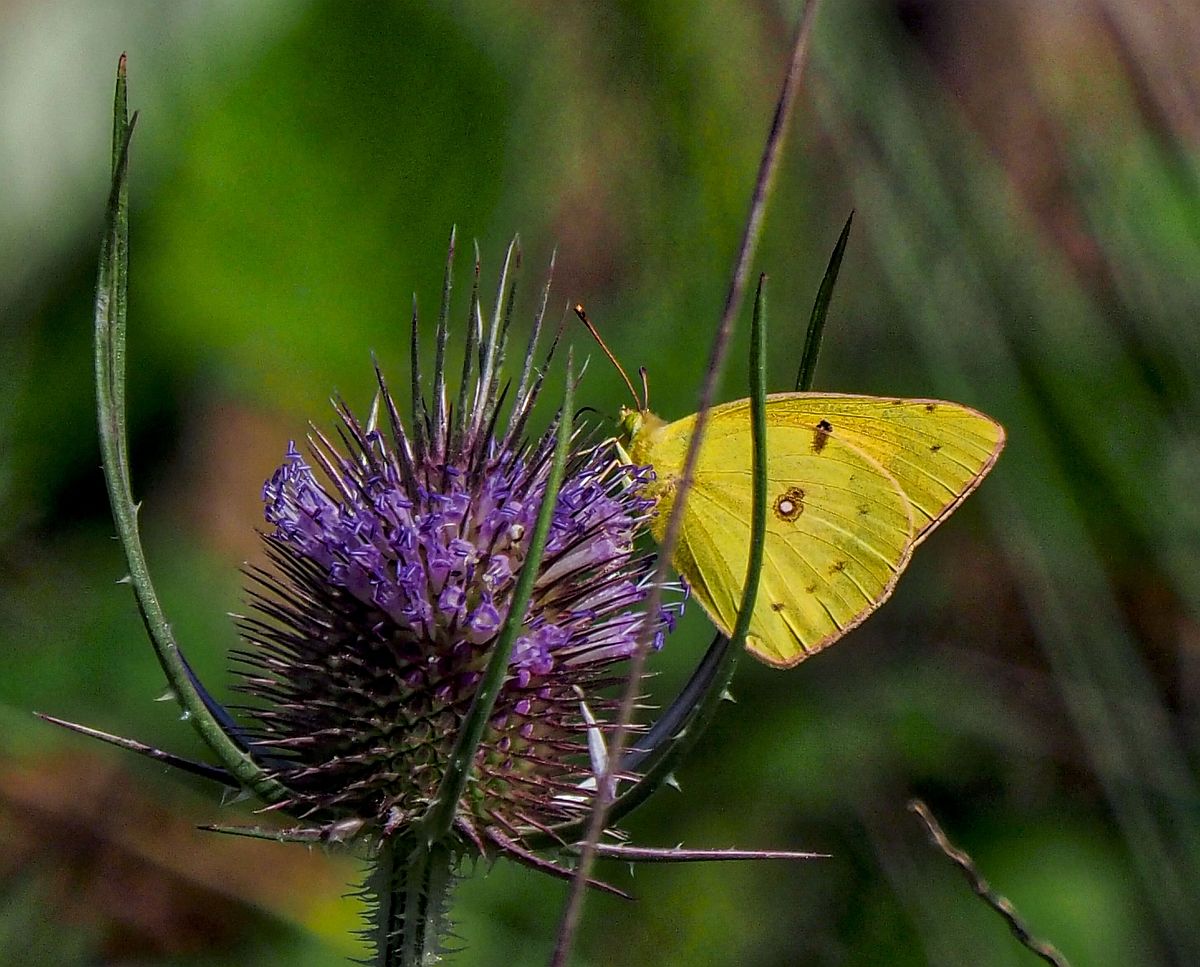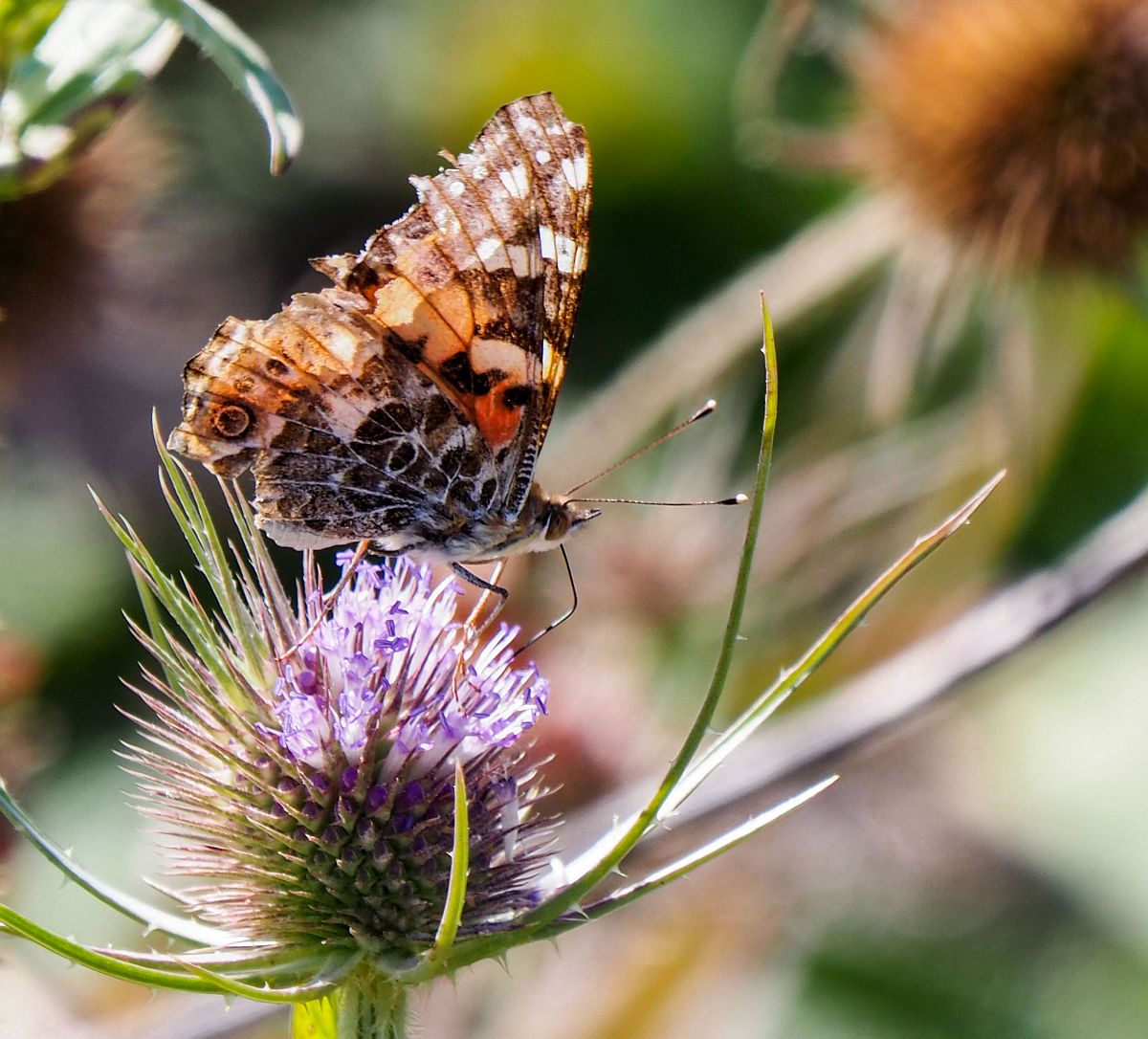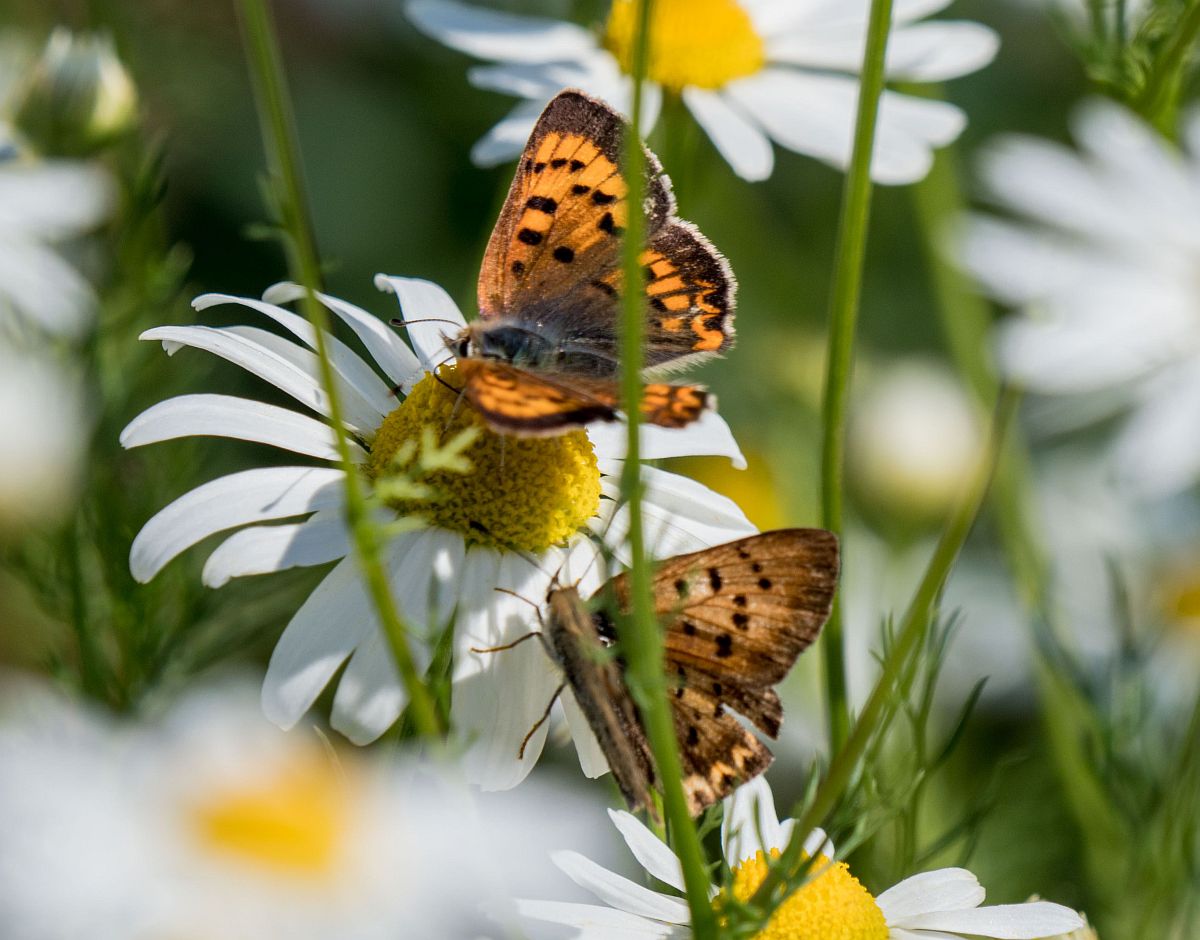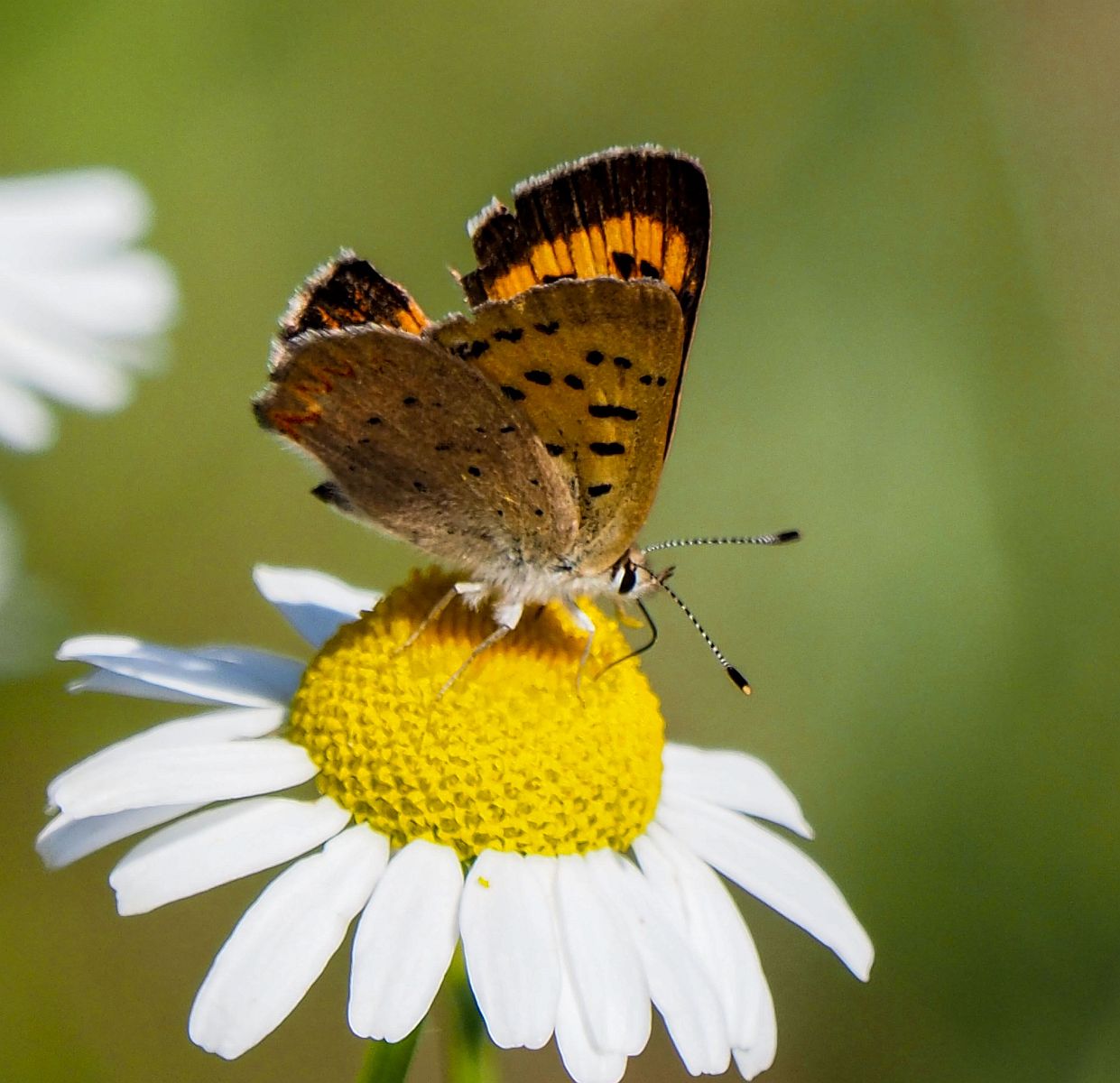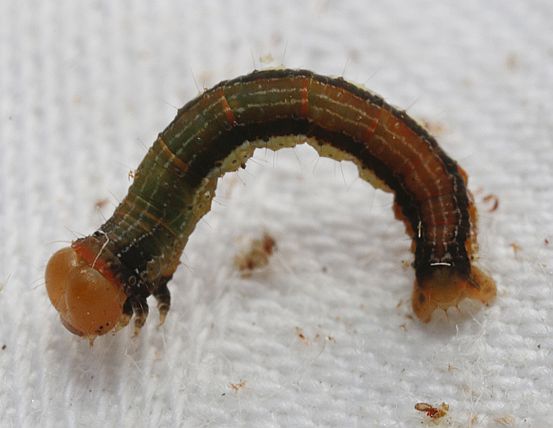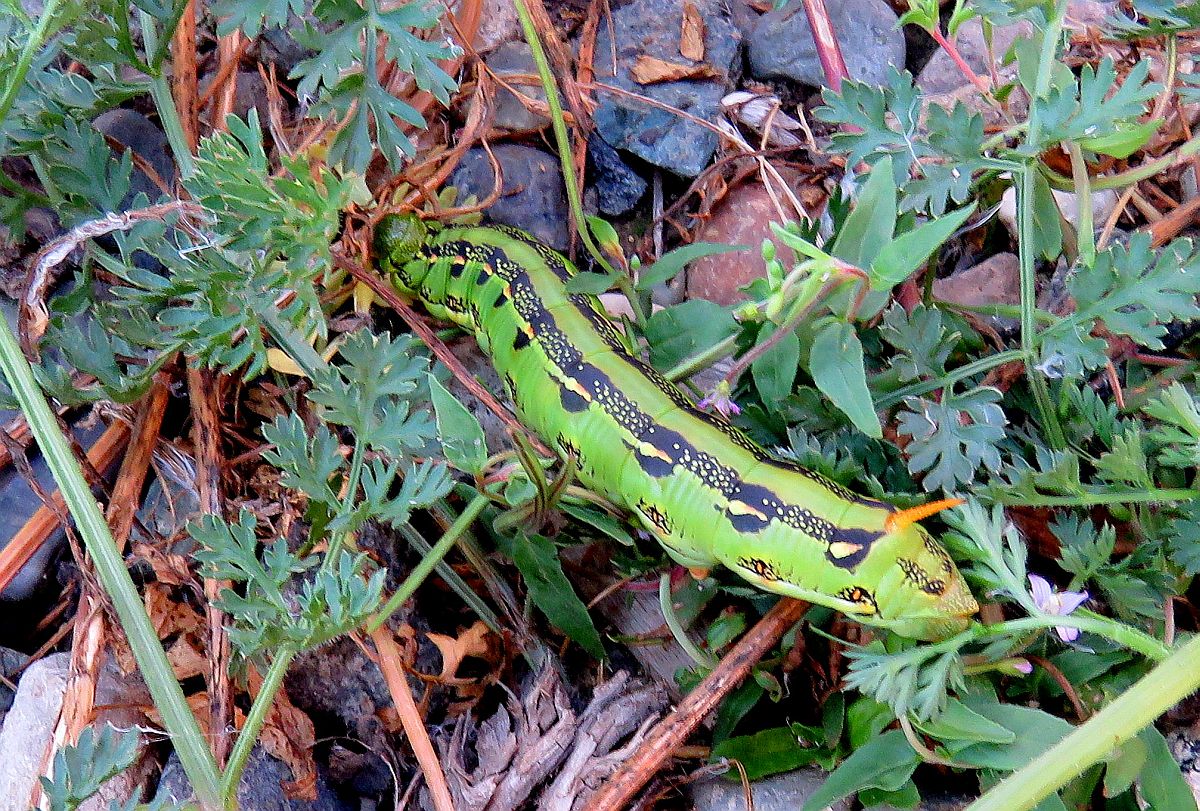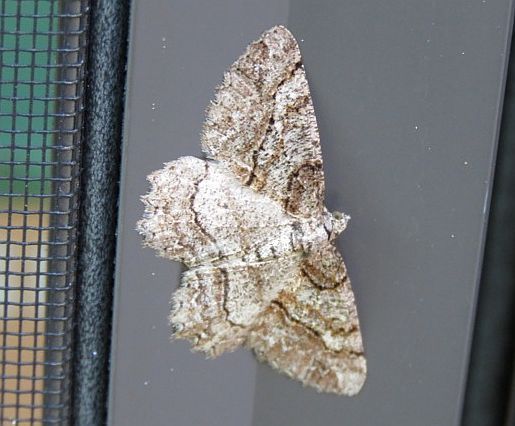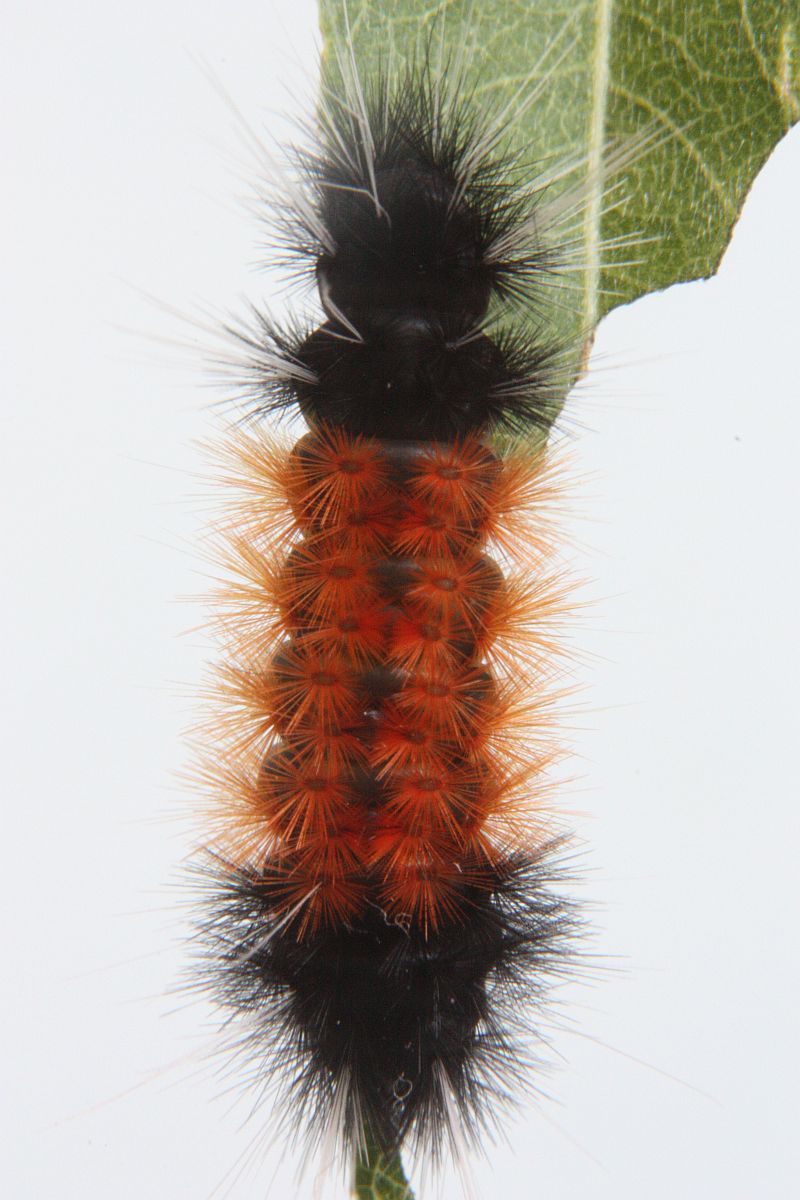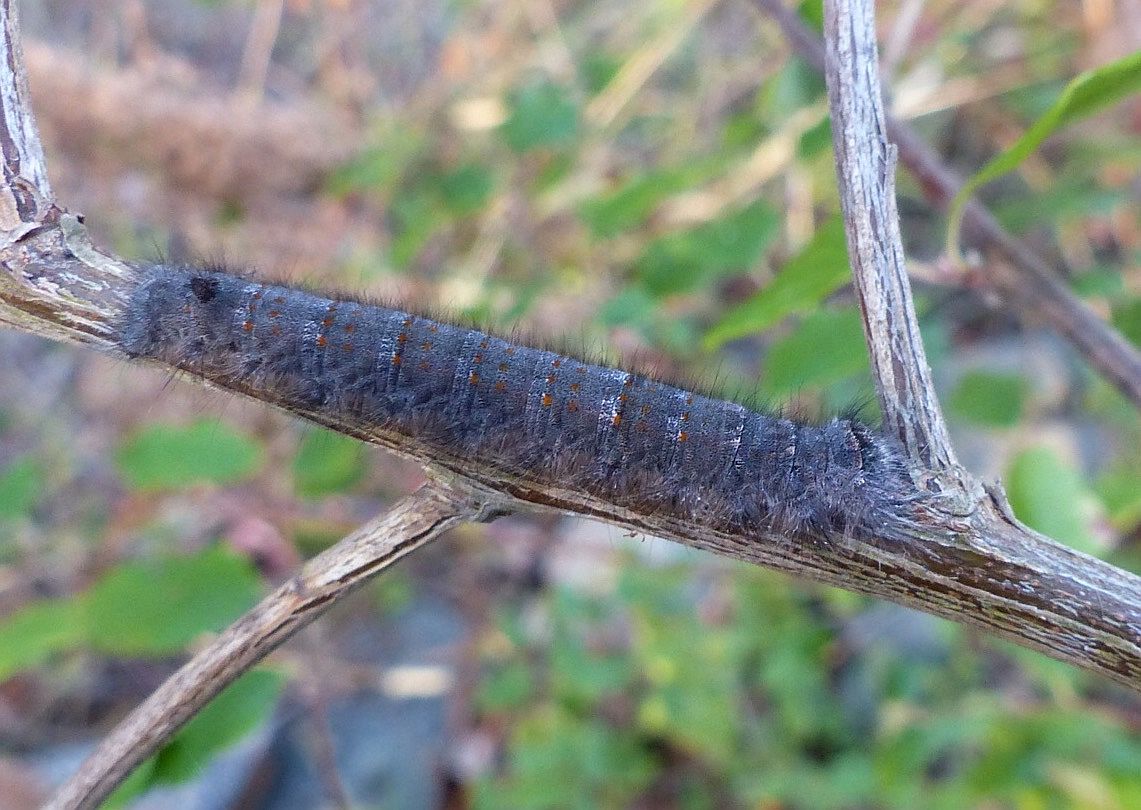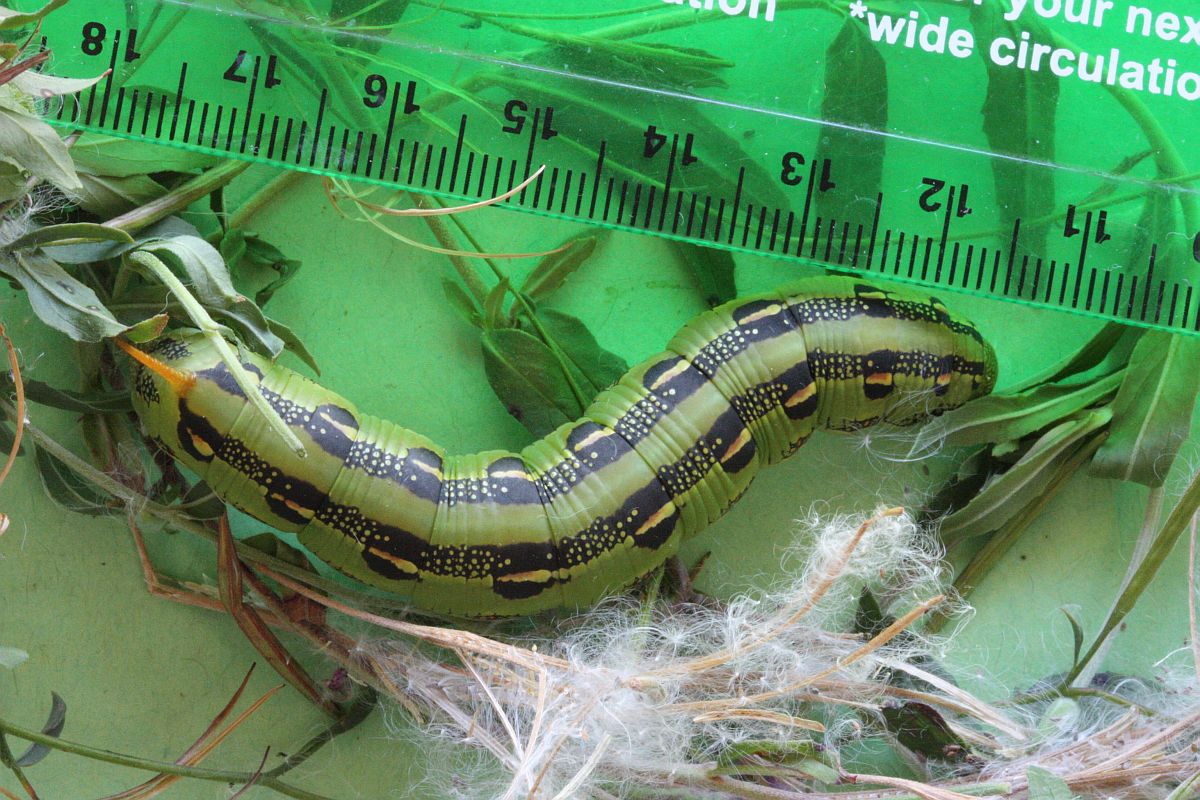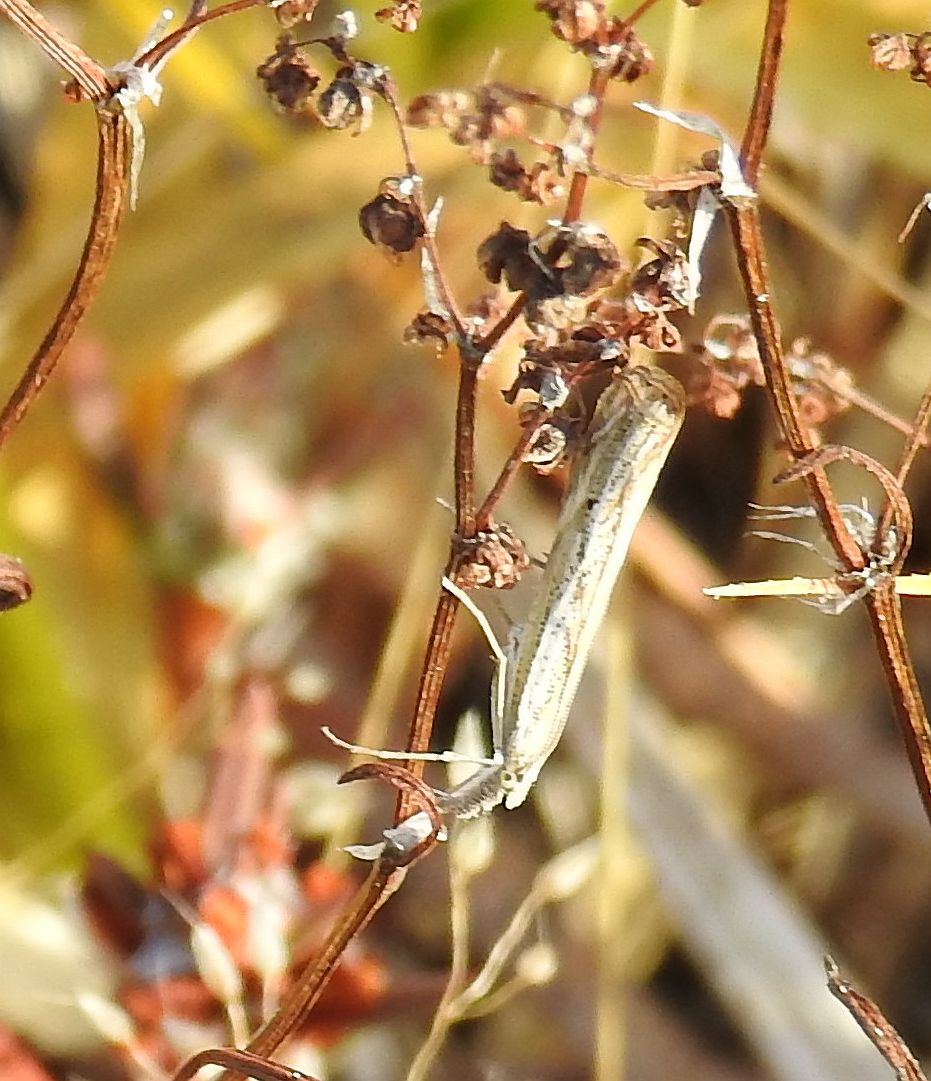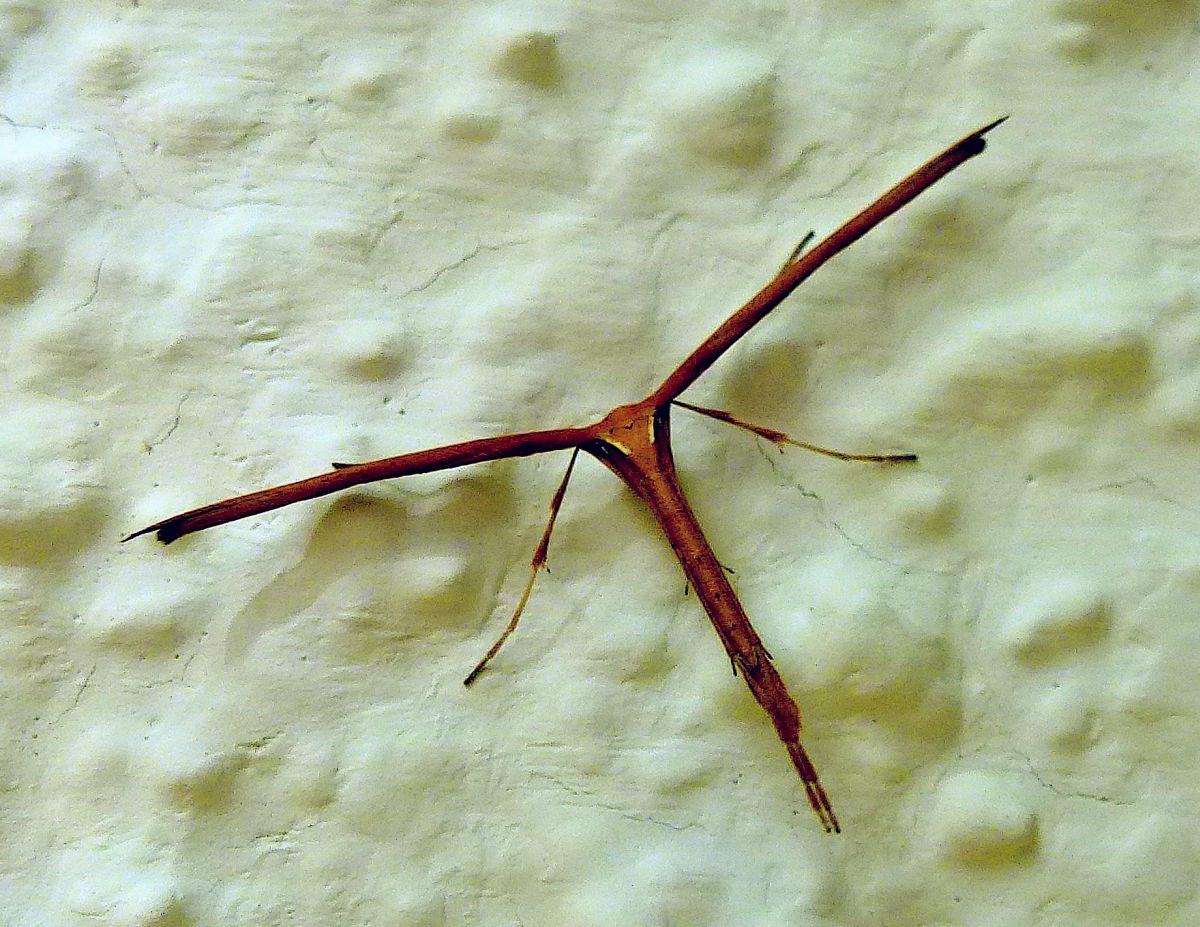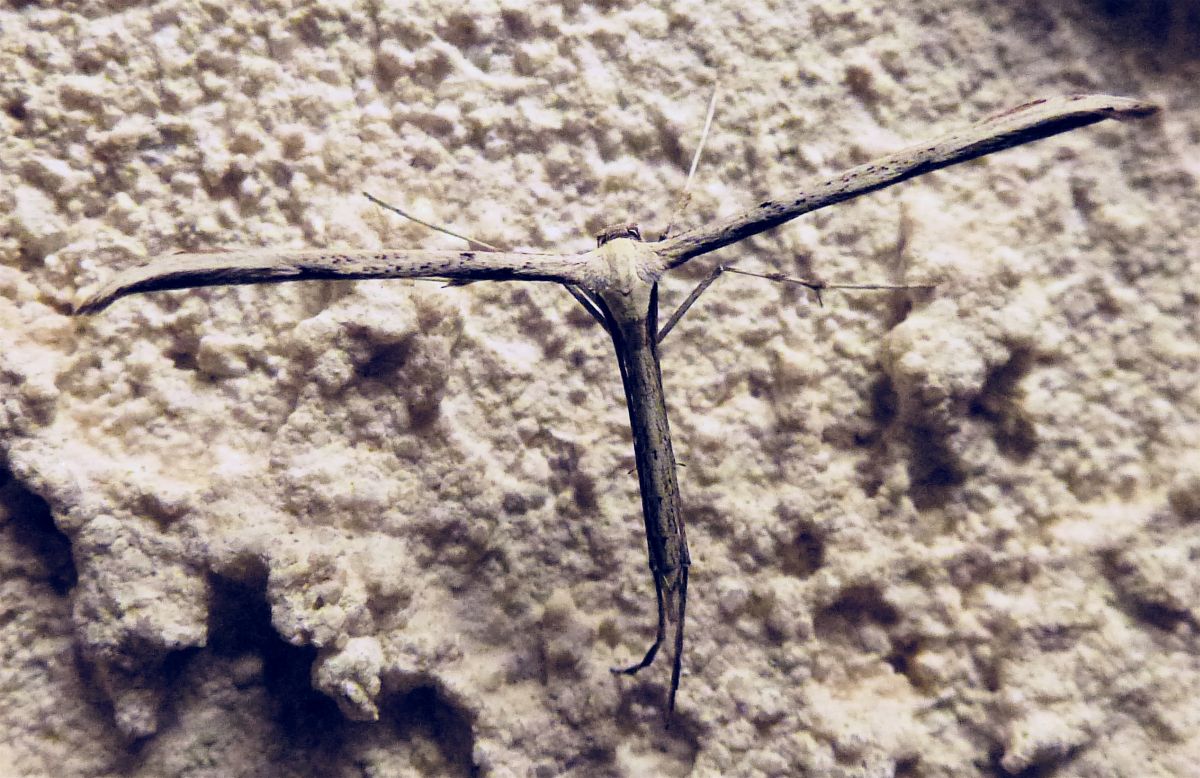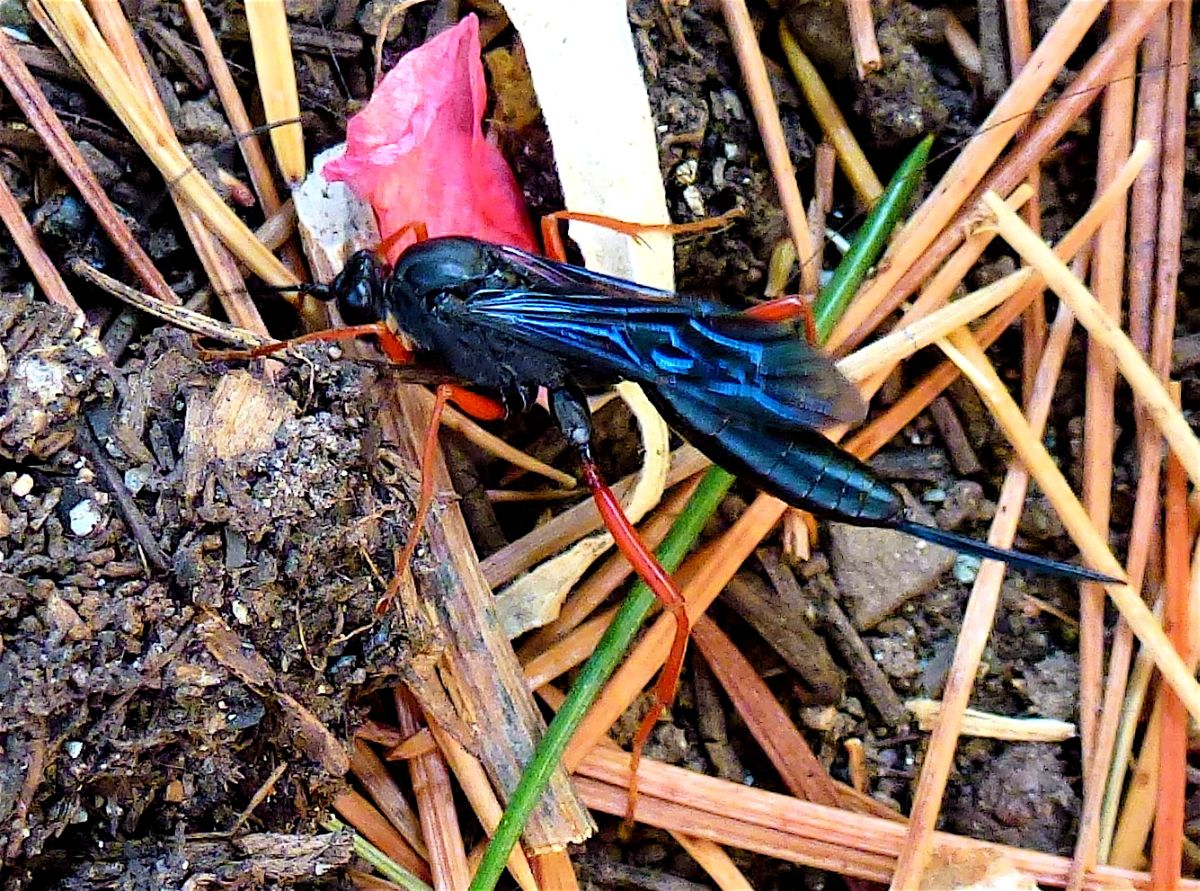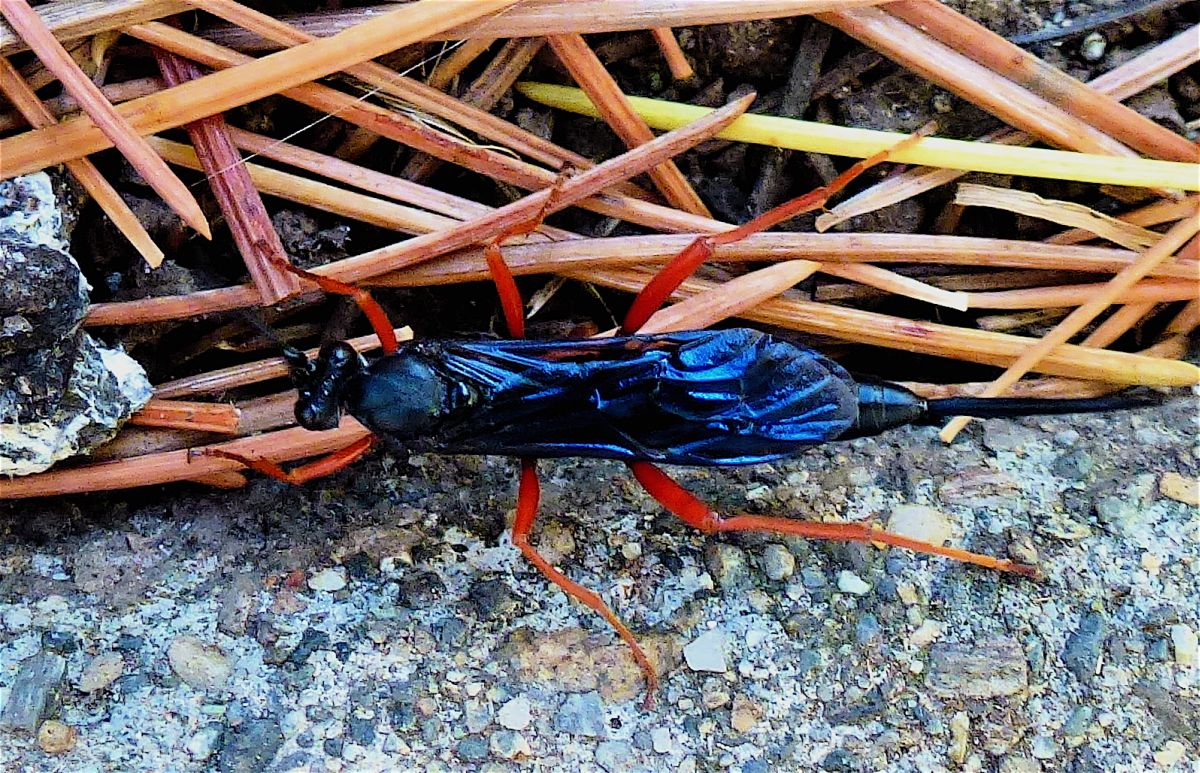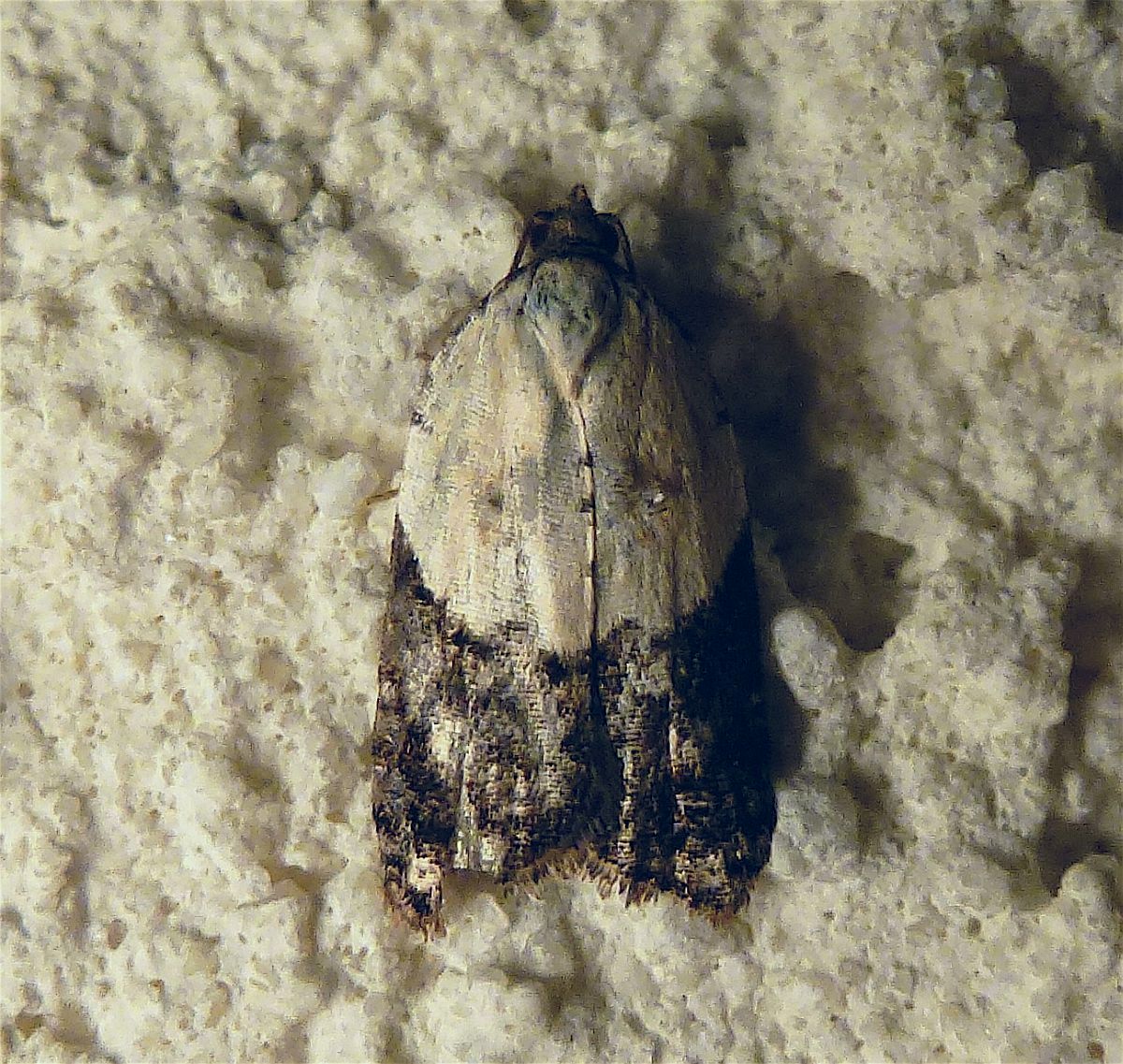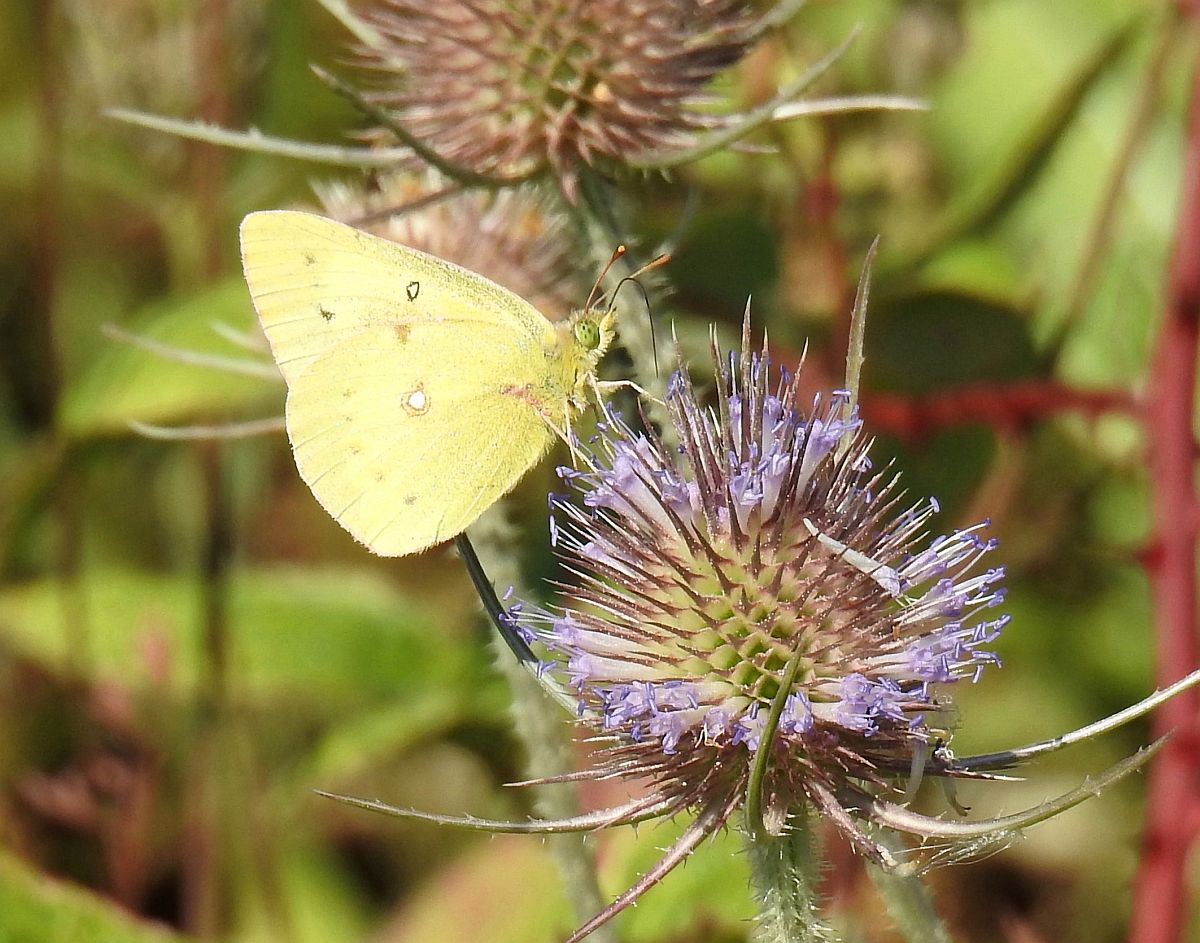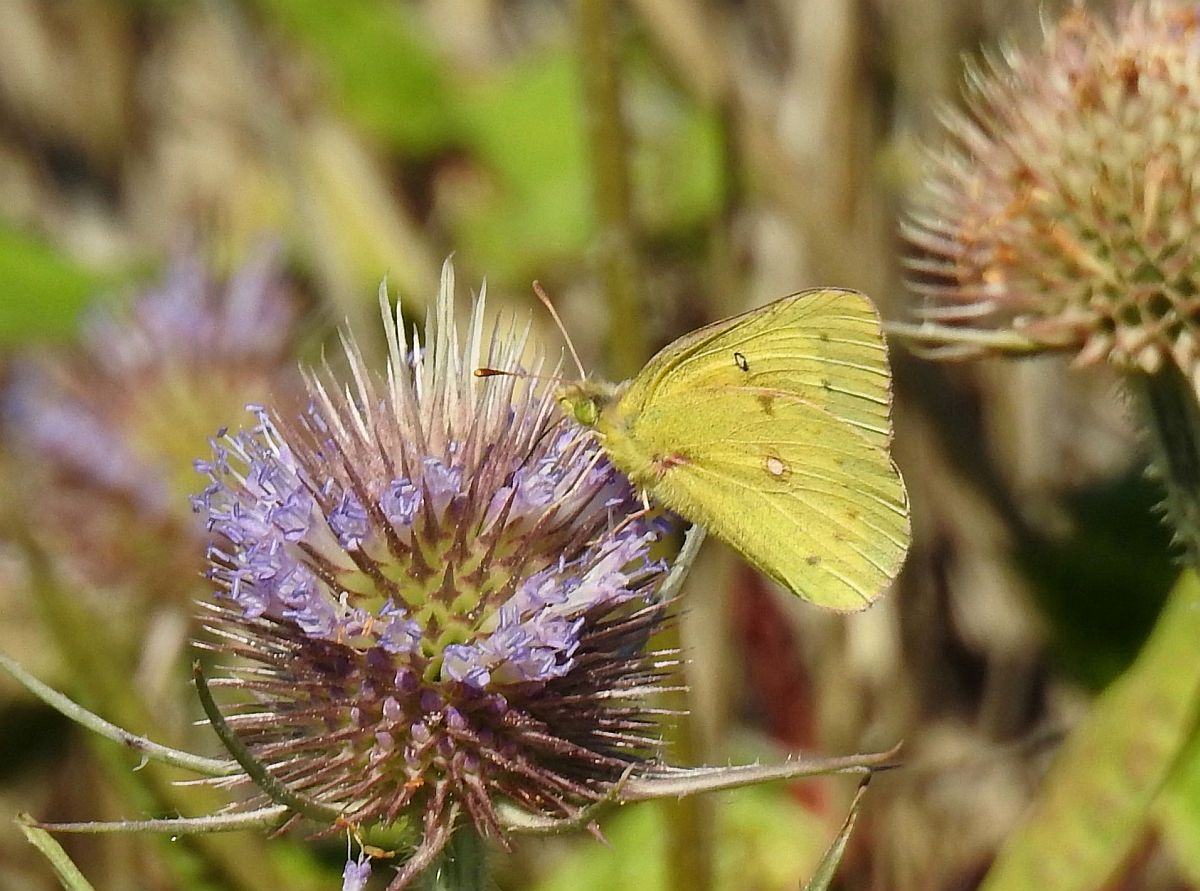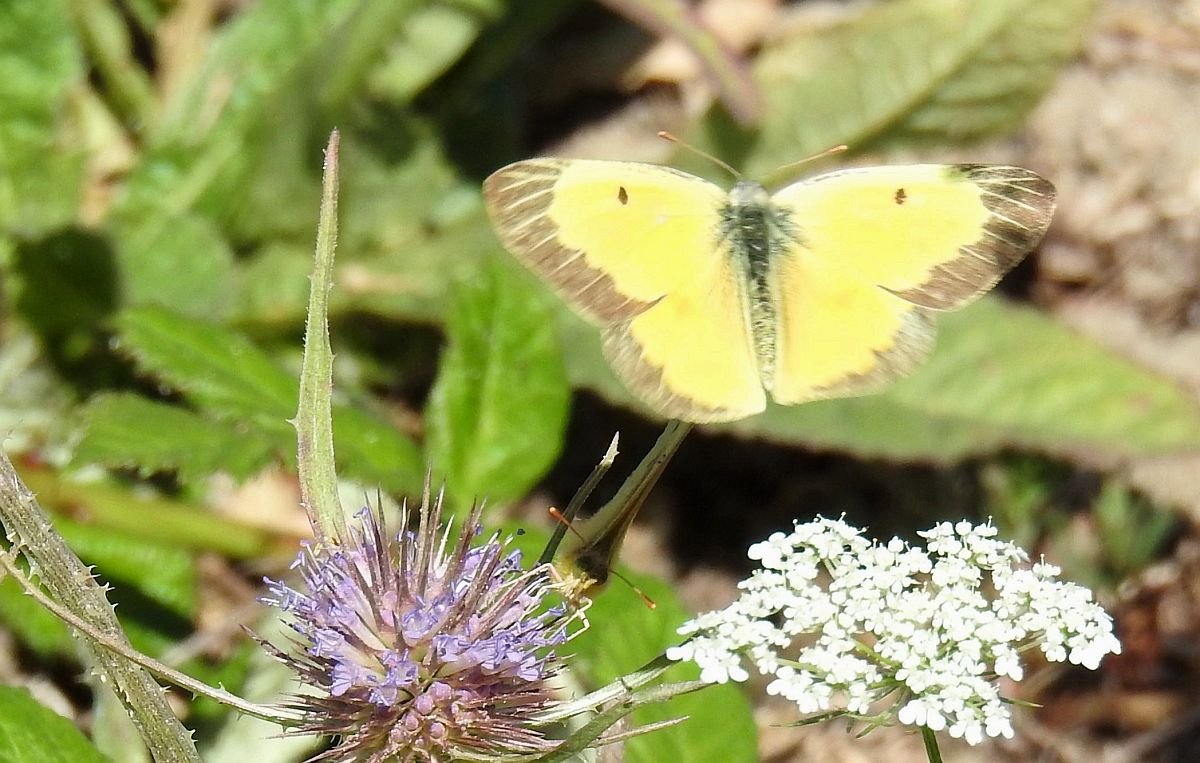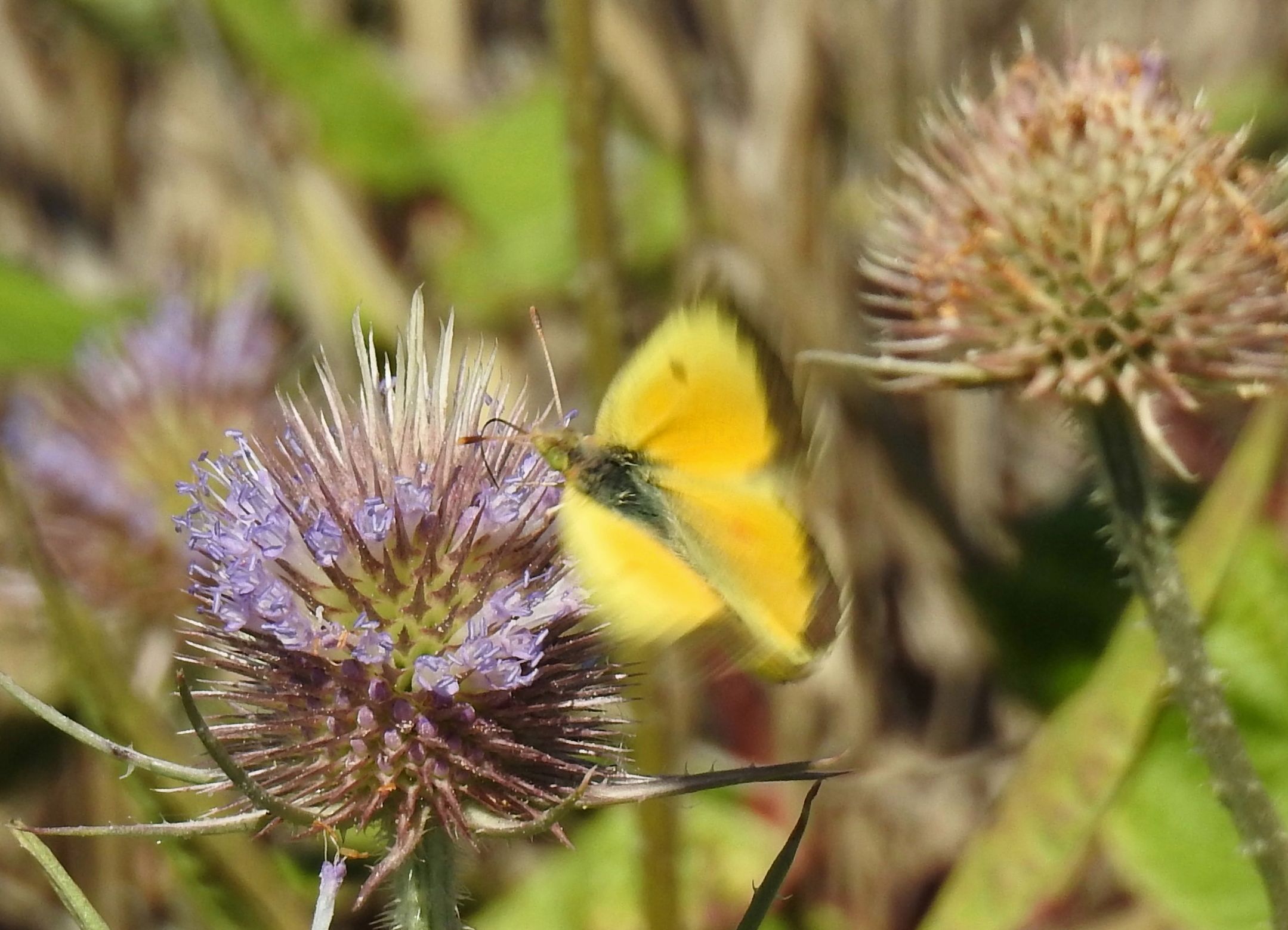2017 September 5
Jeremy Tatum offers some thoughts on sulphur identification.
They are supposed to look different in UV light. Unfortunately, I haven’t got UV eyes, so we have to see what we can do in ordinary light.
At McIntyre reservoir the other day, we saw some butterflies that were a rich, deep orange, and some that were much paler. We sort of assumed – not necessarily correctly – that the latter were females. We would welcome photographs of both colour forms so that we can look at them closely.
Anyway we have to think about Orange Sulphurs, male and female, and Clouded Sulphurs, male and female.
The uppersides of both sexes of Orange Sulphur are washed with orange, though the amount of this varies. It could be a fully, deep, rich orange, or it could be a pale wash that is difficult to convince oneself of. The Clouded Sulphur is not washed with orange at all, and is a rather paler butterfly.
This raises the question: Were the pale butterflies we saw perhaps Clouded Sulphurs, and not female Orange Sulphurs? Photographs welcome!
The real difference between the sexes of both species is to look at the black terminal band. (The termen – adjective terminal – is the outer edge of the wing.) In the male (both species) this band is solid black. In the female (both species) this band contains several yellow spots. That means that, if we can see the upperside, we can tell whether it is male or female – even if we can’t tell which species.
There is a problem in that some females of both species, known as forma helice, are white, rather than yellow or orange. (This is a form – not a subspecies.) I do not know what percentage of the butterflies that we see here have the female helice form. Seen in flight, a helice form could be overlooked and dismissed as a Cabbage White.
The main difference between the two species is the orange colour, but since the depth and extent of this is variable, are there any other features? I haven’t discovered any very obvious and distinctive characters, though there are some that are suggestive.
I think that the width of the black terminal band is broader in the Orange Sulphur than in the Clouded Sulphur, and it extends along the costa (the leading edge) further in the Orange Sulphur than in the Clouded Sulphur. . This may not be much help unless you have specimens of each species in the hand (or good photographs!) – but it may be something of an indication.
On the underside of each wing there is a row of subterminal small black spots. I think these are a bit more conspicuous in the Orange Sulphur than in the Clouded Sulphur.
A further complication – the two species are supposed to interbreed occasionally, or at least intermediate forms are seen. This raises the question as to whether they really are distinct species. I’d like to see the caterpillars of both. From the few photographs I have seen, the caterpillars don’t seem to be readily distinguishable.
And yet another complication. I presume the butterflies we are seeing are migrants – although the Forbidden Field has extensive tracts of Alfalfa, and maybe they have bred there. We have a resident (nonmigratory) sulphur on Vancouver Island – the Western Sulphur. I believe it does not stray far from the alpine meadows, but I suppose we ought to consider the possibility that some of the sulphurs we see down here might be Western Sulphurs. I haven’t given that much thought.
Any good photos of the butterflies we saw on Sunday would be very welcome!
That’s all on sulphurs. Now for woolly bears. This is the season for woolly bears, and there are several which can be seen about now – Lophocampa maculata, Spilosoma virginica, Hyphantria cunia, Pyrrharctia isabella. In English, that’s Spotted Tiger Moth, Yellow Woolly Bear or Virginia Ermine, Fall Webworm, and Banded Woolly Bear or Isabella Moth. The Banded Woolly Bear seems to peak in October, though I saw my first of the season today, at McIntyre reservoir. We usually see it when it has finished feeding, and it is wandering abroad looking for somewhere to spend the winter. Because of this, it is hard to discover its favoured foodplants, so I was interested to see that the one I saw this morning was still actively feeding upon a species of Stellaria.


